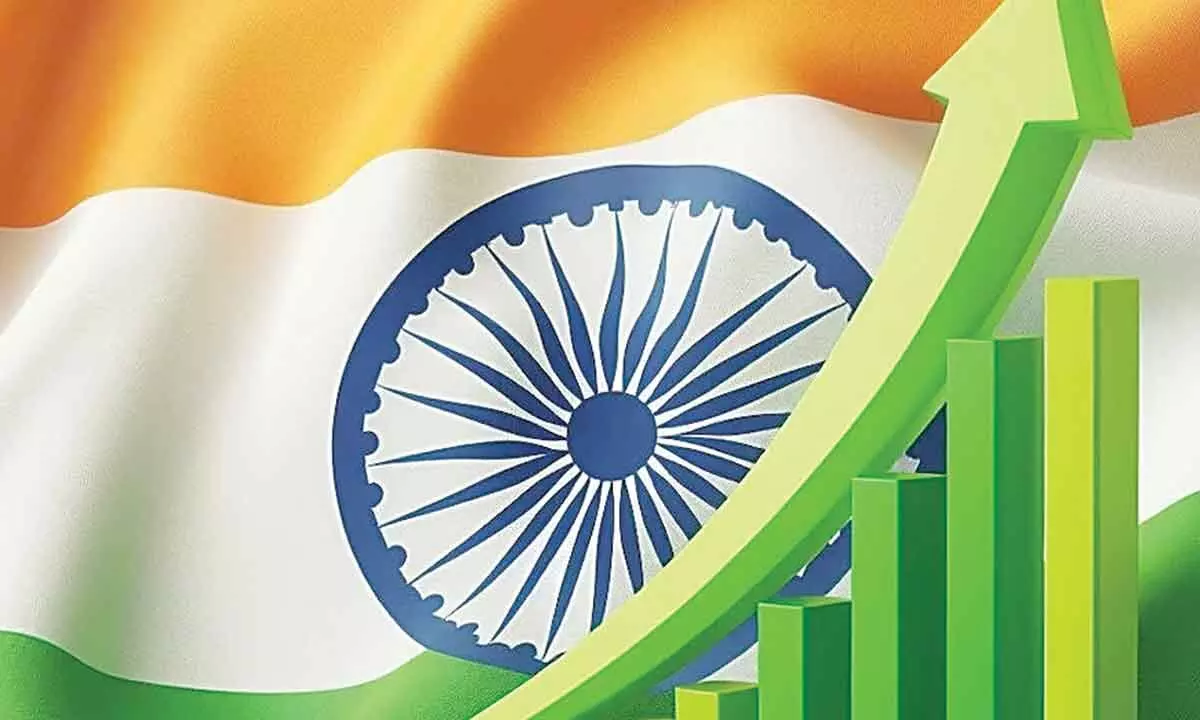Everyone has to contribute to achieve Viksit Bharat by 2047
India is fortunate to be better off both in terms of economic growth and financial stability

Agriculture and allied activities must find their true potential in terms of growth while agricultural labourers and farmers should be adequately rewarded. The ‘One District One Product’ initiative and boosting exports of rural products make for a good beginning
As the new financial year 2024-25 becomes us, it is time to retrospect the global happenings in 2023-24 and their impact on India. A pragmatic look will show that the year was marred by major upheavals across sectors and when taken under any yardstick it was not a good year from the economic and geo political points of view.
The reasons are wide ranging-global uncertainties, low economic growth, high inflation, high interest rates, tight monetary policy, disturbing geo political situation affecting world trade, supply chain disruptions, volatility in food prices, energy prices, heavy or deficient rainfall due to climate change related risks, heavy debt of lower income or less income countriesand global human sufferings.
The World Economic Situation and Prospects report for 2024 highlights the deceleration of the global GDP growth from an estimated 2.7% in 2023 to 2.4% in 2024 signallinga continuation of sluggish growth trends.
These geo political crises, intensity and frequency of extreme weather events, among others, have enhanced underlying risks and vulnerabilities, which are affecting the progress of Sustainable Development Goals (SDGs).
In this background, India is fortunate to be better off both in terms of economic growth and financial stability, thanks to the prudent monetary policy evolved by the Reserve Bank of India (RBI). The other contributing factors have been the fiscal policy and proactive steps to ease supply constraints and provide momentum to growth by the central and state governments. It is now estimated that with 8.2%, 8.1%, and 8.4% GDP growth in the last three quarters of this financial year, we are likely to be nearer to 8% GDP growth for 2023-24. Also noteworthy has been Capex spending by the central and state governments and the Centre’s additional support, which is likely to continue into the financial year 2024-25. The interim budget has projected it at 4.6% of GDP in FY 2025.
The macroeconomic fundamentals of the country’s economy are strong and this provides scope and opportunities for sustainable economic growth in the future too provided the scope for all drivers of growth will blossom with suitable policy initiatives and favourable developmental programs and conducive environment of growth. Also on the anvil are big policy reforms and bold transformative steps so as to achieve Vikasit Bharat,a developed economy that will ensure inclusivity and equity, a higher per capita income, rural and urban transformation with greater investment under the PPI mode and fully utilisingpublic digital infrastructure while duly propelling startups and AI use.
Agriculture should get the benefits of technology. Public and private sector investment must enhance productivity, quality seeds and fertilizers and boosting the scope of Indian agricultural products in international markets with its quality brands. Agriculture and allied activities must find their true potential in terms of growth while agricultural labourers and farmers should be adequately rewarded. Rural craft and industries must be given time push. The ‘One District One Product’ initiative and boosting exports of rural products make for a good beginning.
Another focus point must be on empowering MSMEs so that they become global suppliers of raw materials as well as finished products. As they have more scope to adopt latest technology and improve the quality and productivity of their products, public and private investment should supplement their equity and provide common infrastructure and technology from each cluster so as to make it to the global value chain.
Large corporates must come forward to engage MSMEs as they will contribute 30% to 50% to GDP and 50 % to 75% or more towards exports. There should be road map for them to access equity market as well bond market.
The endeavour has been to make India a global hub for large industries with ease of business, large industrial corridor, encouraging FDI policy and opening of all sectors including space, defence and energy to foreign direct investment. The PLI scheme for more than 15 sectors with production linked subsidy scheme, the China plus policy to invite global giants, opening up sectors like hydrogen and thenational infrastructure pipeline projects are steps in the right direction.
We need to enhance the contribution of manufacturing to 25% as planned by the government with substantial FDI inflows. Contribution of manufacturing to exports must be enhanced from 16% to 20% in order to enable India to achieve its exports goal of $ 8.3 trillion by 2047.
We should engage the growing and aspiring young generation and women in the nation's transformative growth. Regulations and policies should support innovation, research and development, patent listing both in India and abroad. Current programmes like ‘Made in India’, ‘Digital India’, ‘Startup India’, women empowerment andwomen enterprises are to be the focus areas and given due push. The growing young and qualified and semi-qualified should find enough economic opportunities and successful engagement as either supporting staff or as promoters.
As Climate risk is becoming more pronounced, both government and private sector and individual citizens should take initiatives to reduce carbon emissions and reduce fossil fuels utilisation and switch over to alternative renewable energy sources.
The achievement of SDGS and inclusive growth and equitable growth can happen along with our sensible and responsible environment-friendly and appreciable work and preserving the environment.
Hopefully, everyone plays a roleto make India a true Viksit Bharat by 2047.
(The author is former Chairman & Managing Director of Indian Overseas Bank)




